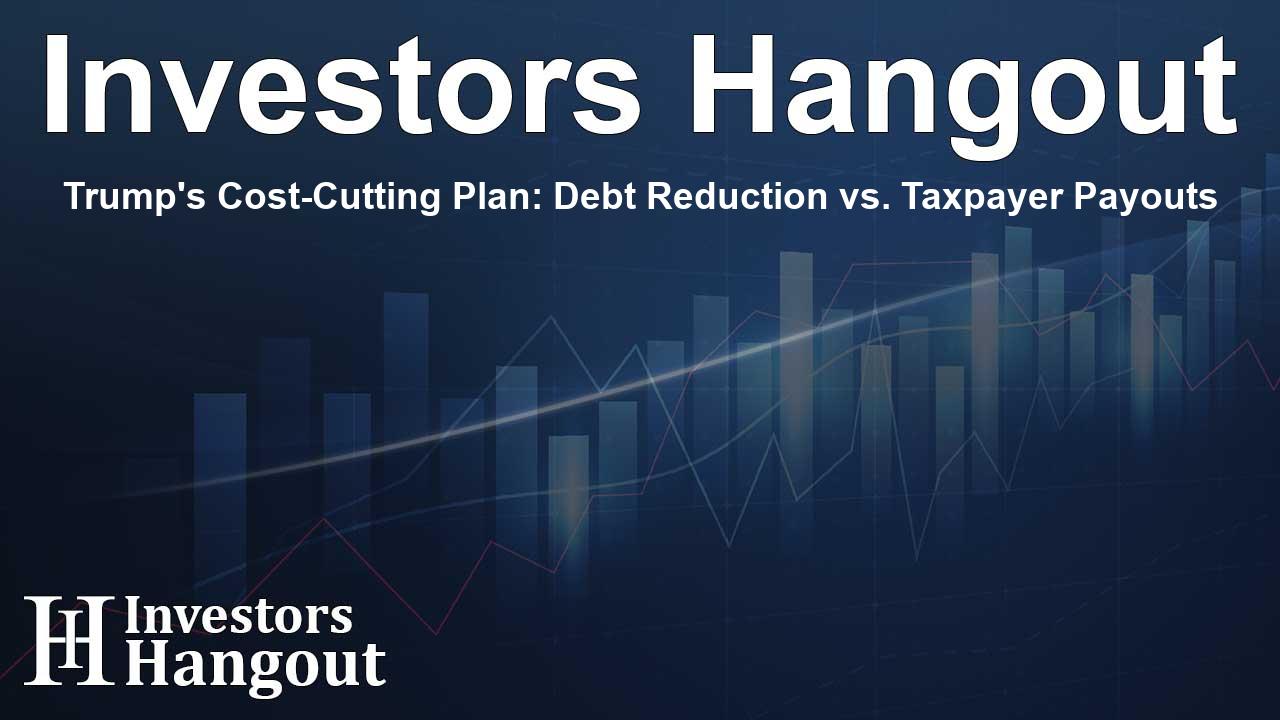Trump's Cost-Cutting Plan: Debt Reduction vs. Taxpayer Payouts

Trump's Innovative Economic Proposal
As discussions around economic strategies heat up, former President Donald Trump has proposed a bold plan that seeks to leverage cost savings from government efficiency. His idea involves rewarding American taxpayers with a portion of the savings, stirring up a diverse debate among economists and policymakers.
Understanding the Proposal
The key proposal put forward at a recent investment summit involves the distribution of 20% of anticipated savings from the Department of Government Efficiency (DOGE) to the public. Another 20% would be allocated to reducing the national debt. The former President emphasized the enormous potential of these savings.
Macro Strategist's Perspective
Craig Shapiro, a respected macro strategist, has voiced strong opposition to the proposed distribution plan. He argues that the total savings should be directed solely towards reducing the deficit and controlling inflation, stating emphatically, "All savings should go to reduce deficits and the debt and to control inflation. Full stop." Shapiro cautions that distributing funds in this manner could derail efforts focused on curbing inflation and increasing overall economic stability.
Potential Impacts on Inflation and Debt
The implications of such a payout raise significant concerns about inflationary pressures. According to established economic theories, especially those associated with John Maynard Keynes, it's crucial to balance fiscal stimuli with sound monetary policies. A well-structured approach must account for both increased demand through fiscal measures and the potential inflationary effects of such decisions.
Interest Rates and Economic Indicators
Current forecasts from the CME Group's FedWatch tool indicate a high probability that the Federal Reserve may ease interest rates in future meetings, which could shape the economic landscape significantly. However, careful consideration is necessary to understand how distribution to taxpayers would intersect with these monetary policies.
Public Reaction and Feedback
The proposal has not gone unnoticed in the public sphere. Figures like Elon Musk have entered the conversation, suggesting a more structured approach could better serve taxpayers. The idea of a 'DOGE Dividend' has gained traction among supporters who believe it represents a fair return for taxpayers, funded directly by government-generated savings.
Economic Outcomes and Considerations
Proponents of the 'DOGE Dividend' argue that it could enhance taxpayer savings and reduce spending, potentially leading to a non-inflationary economic outcome. The rationale is that households receiving this unexpected income would likely save or invest, contributing positively to the economy rather than fueling inflation.
Market Performance Insights
In the wake of these discussions, key market indicators also reflect the sentiments surrounding government fiscal policies. The SPDR S&P 500 ETF Trust (SPY) and Invesco QQQ Trust ETF (QQQ) have shown upward trends, which many attribute to ongoing investments and trader confidence in economic recovery.
Looking Ahead
As talks continue, it remains crucial to navigate the complexities of economic policy and public sentiment. Balancing the interests of taxpayers with fiscal responsibility will be paramount in shaping future economic outcomes.
Frequently Asked Questions
What is Trump's proposal regarding taxpayer payments?
Trump's proposal suggests distributing a portion of savings from government efficiency efforts to taxpayers while allocating some to debt reduction.
What concerns have been raised by economists?
Economists, like Craig Shapiro, argue that distributing funds could undermine efforts to control inflation and reduce overall debt.
How does the proposal relate to existing economic theory?
The proposal raises questions about the balance between fiscal stimulus and monetary policy as outlined in Keynesian economics.
What are the current predictions for interest rates?
Current forecasts suggest a likelihood that the Federal Reserve will ease interest rates in the upcoming meetings.
What are the market indicators reflecting on these policies?
Market indicators such as SPY and QQQ have shown an uptick, possibly indicating positive trader sentiment and confidence in economic policies.
About The Author
Contact Dylan Bailey privately here. Or send an email with ATTN: Dylan Bailey as the subject to contact@investorshangout.com.
About Investors Hangout
Investors Hangout is a leading online stock forum for financial discussion and learning, offering a wide range of free tools and resources. It draws in traders of all levels, who exchange market knowledge, investigate trading tactics, and keep an eye on industry developments in real time. Featuring financial articles, stock message boards, quotes, charts, company profiles, and live news updates. Through cooperative learning and a wealth of informational resources, it helps users from novices creating their first portfolios to experts honing their techniques. Join Investors Hangout today: https://investorshangout.com/
The content of this article is based on factual, publicly available information and does not represent legal, financial, or investment advice. Investors Hangout does not offer financial advice, and the author is not a licensed financial advisor. Consult a qualified advisor before making any financial or investment decisions based on this article. This article should not be considered advice to purchase, sell, or hold any securities or other investments. If any of the material provided here is inaccurate, please contact us for corrections.
